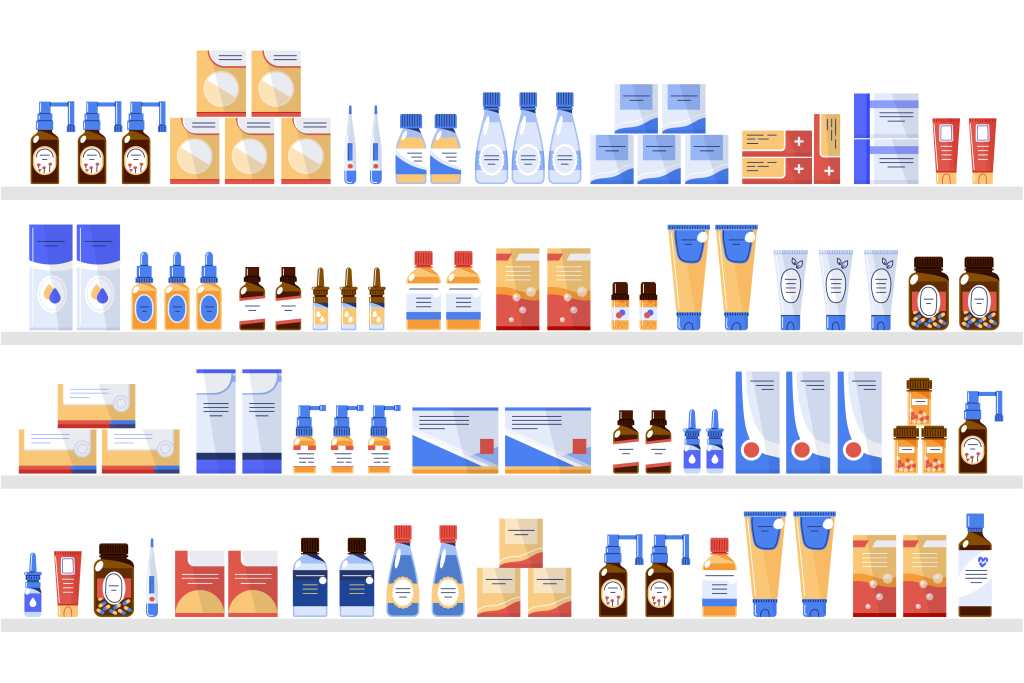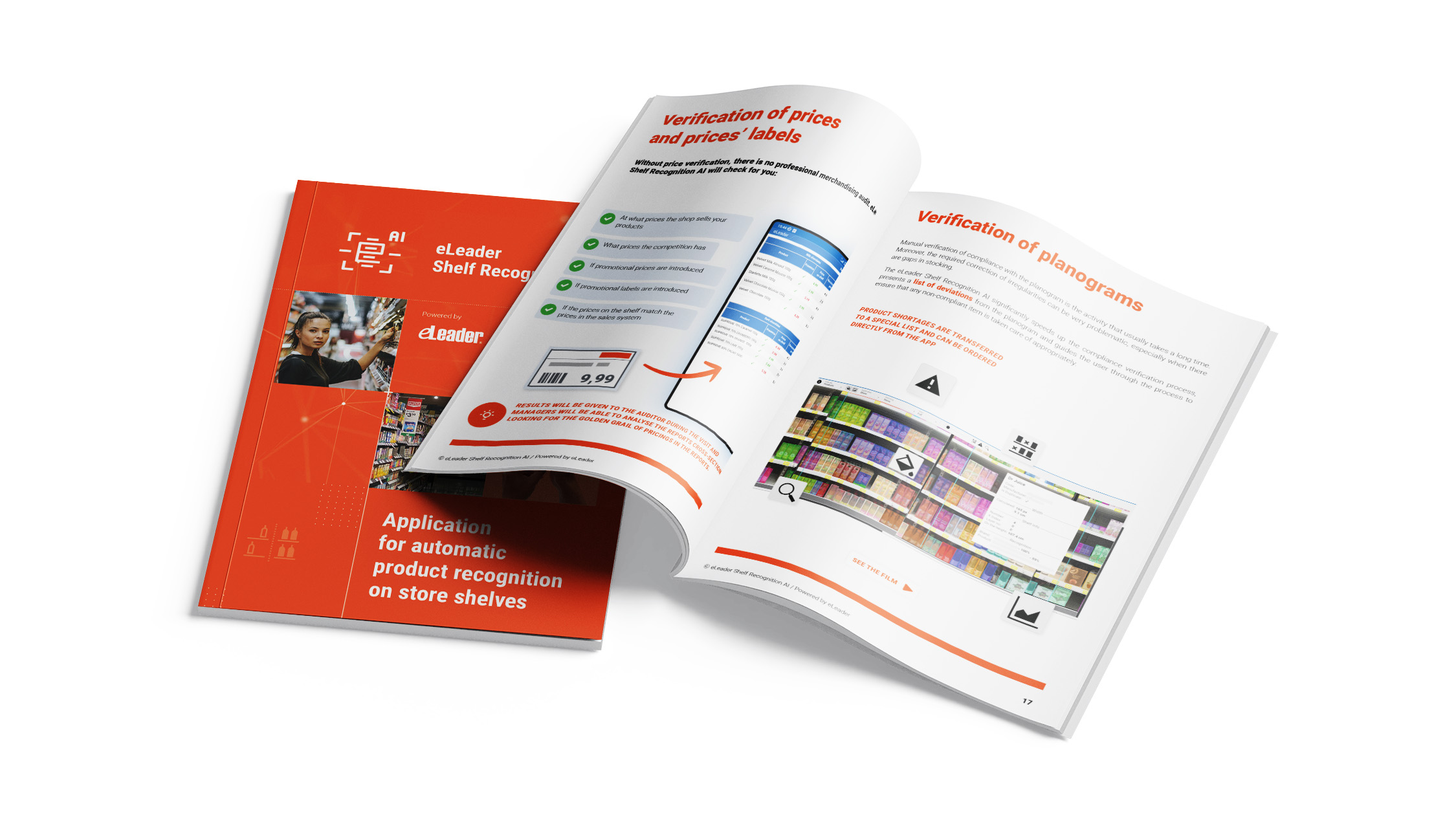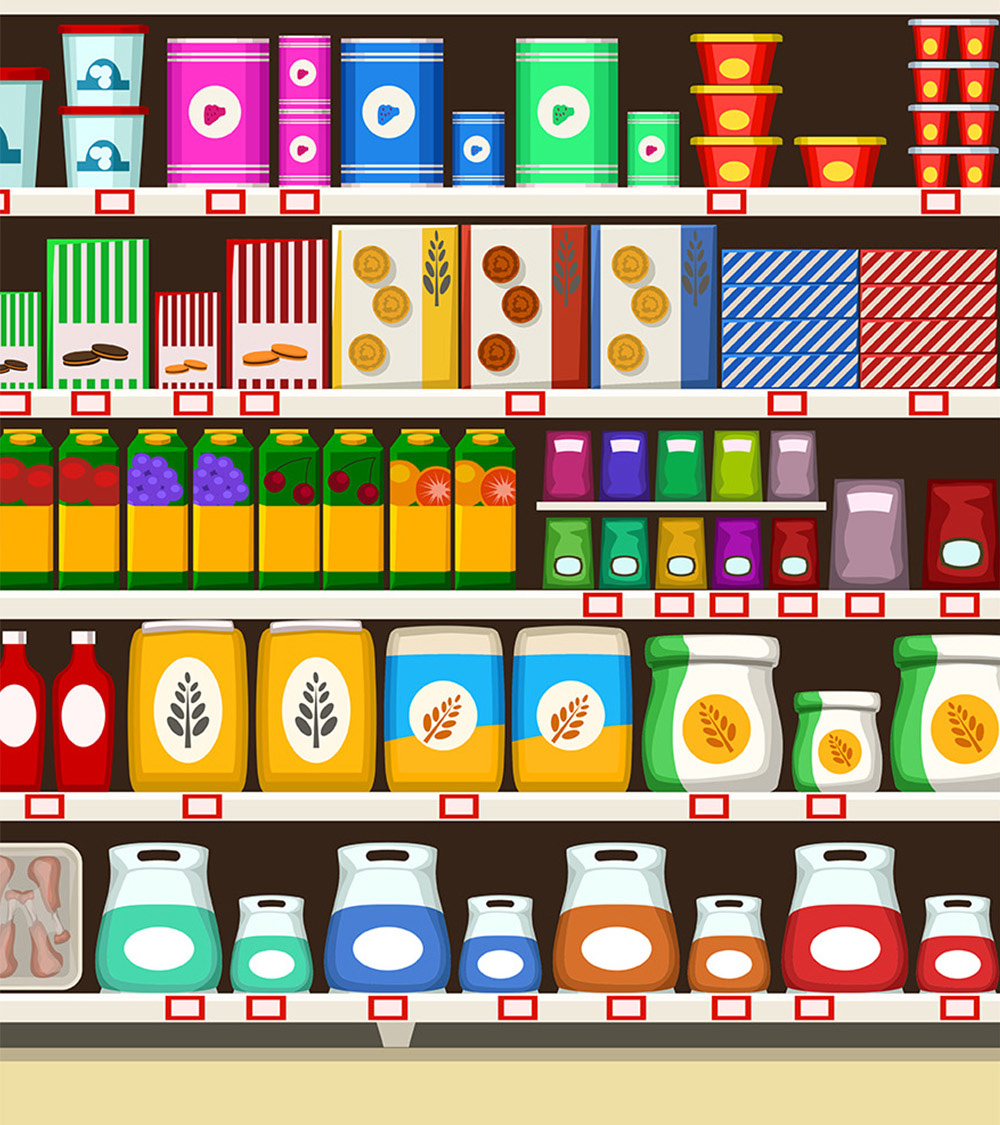
Examining the planogram will help you reduce stock gaps
How to eliminate stock gaps with automatic planogram verification? Check out what eLeader Shelf Recognition AI offers.
Good display is a top priority in retail. Providing consumers with a wide range of products, but with a suggestion to choose the highest-margin products, only seems like a simple task. Even the most beautiful planogram will not sell, especially when the shelf suffers from chronic stock gaps.
What is a planogram?
In one of our articles we wrote that there are many more enjoyable ways to build display standards than planograms. However, we know that in many situations, especially in the case of retail chains, completely abandoning planograms in display management and category management is simply not possible.
Let us remind you that a planogram is a graphical form of establishing merchandising standards, which mainly contains information about the exact location of products on shelves. Building a planogram is a process that can be properly executed by a narrow group of specialists (such as the company Strategix). They usually use advanced software that takes into account a whole range of variables regarding the store, the product category, sales strategies, and the competitive environment. On the other hand, to create a planogram that will serve as a model for product placement on shelves, a simple table saved in a spreadsheet is enough.

Stock gaps – a sales killer
Among the many parameters controlled during merchandising audits, on-shelf availability (OSA) stands out among the indicators describing the store’s condition and the quality of the sales representative’s work. Stock gaps on the shelf (whether the product is not displayed, sold out, or placed with a different category) practically exclude the possibility of purchase. If this situation occurs frequently, there is a risk of customer churn. Consumers who cannot find products on the shelves either reach for substitutes or go to the competition. The first case is a blow to the producer, the second affects the store, and sometimes the entire retail chain.
One of the basic principles of merchandising is a varied product range. While the lack of availability of goods and category leaders’ brands is quite easy to detect, less represented products are more likely to escape notice during ongoing display checks in the store. If you have a planogram, try to compare it with the shelf as often as possible.

Automatic verification of planogram compliance
If you do not want or cannot give up using graphical descriptions of how the product shelf should look, you should know that you can also count on significant improvements here. Executing and verifying planograms, which helps in detecting stock gaps, is possible with automatic audits that will precisely show how closely the product arrangement on the shelf matches the ideal state from the planogram.
Planogram-based display audits supported by eLeader Shelf Recognition AI rely on analyzing photos from stores. First, ensure that the system your people use has the correct, up-to-date planogram file attached to the audited point of sale. It is also essential to strictly adhere to the product placement order, not add products outside the planogram, maintain the required shelf layout, and avoid using substitutes for missing goods (in such a case, an empty space on the shelf is better).
Examining the planogram, under the above conditions, is an easy and quick process. To be effective, you need to have a scenario designed for inconsistencies (which, let’s face it, occur in almost every audit). The SFA system will earn its name if it helps to explain and eliminate discrepancies between the actual state and the ideal from the picture.
Thus, examining the planogram should initiate steps to determine the causes of missing or improperly placed goods. The proper workflow should lead the salesperson or other person responsible for the display in the store to display the available products and order the goods missing from the store’s warehouse. Data generated by audits should be analyzed. Regular stock gaps may signal the need to increase the quantity of goods ordered or the frequency of orders; sometimes, it simply happens that the shelf cannot keep up with sales.
If you need quick and automated planogram audits, our specialists will be happy to demonstrate the capabilities of eLeader Shelf Recognition AI. Together we will assess the possibility of implementing the optimal tool for your company.
Niche knowledge straight to your inbox!
If you find what you’re reading interesting, sign up for our newsletter to receive valuable articles straight to your email inbox.

Leave e-mail here:





